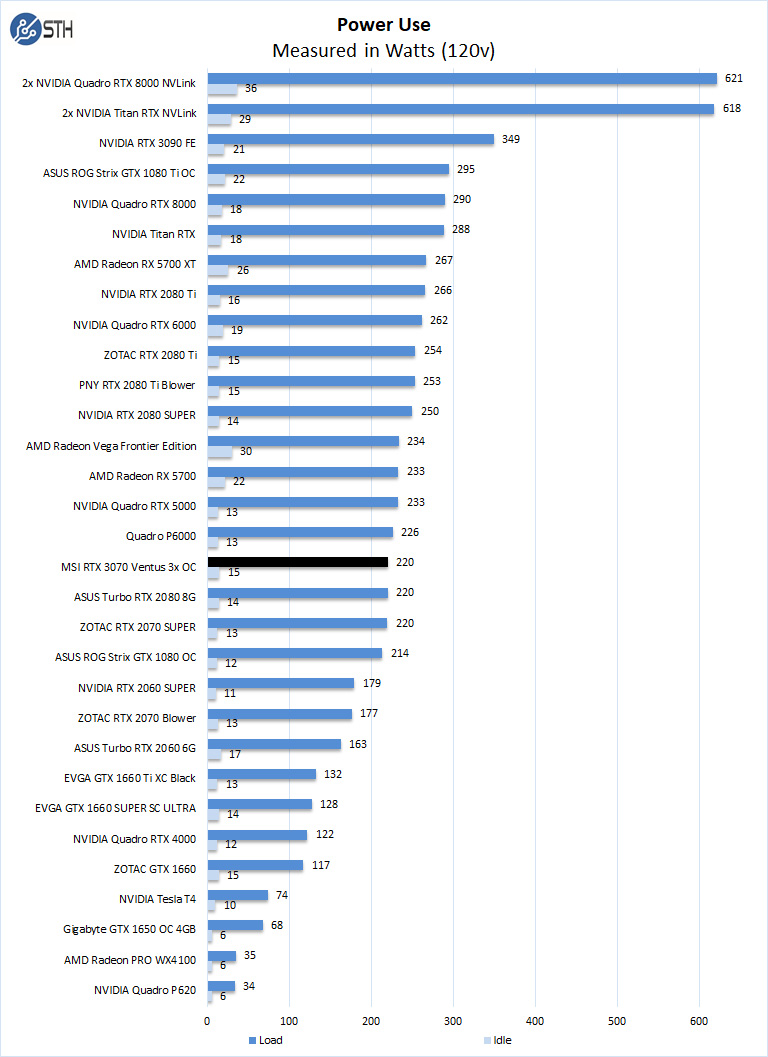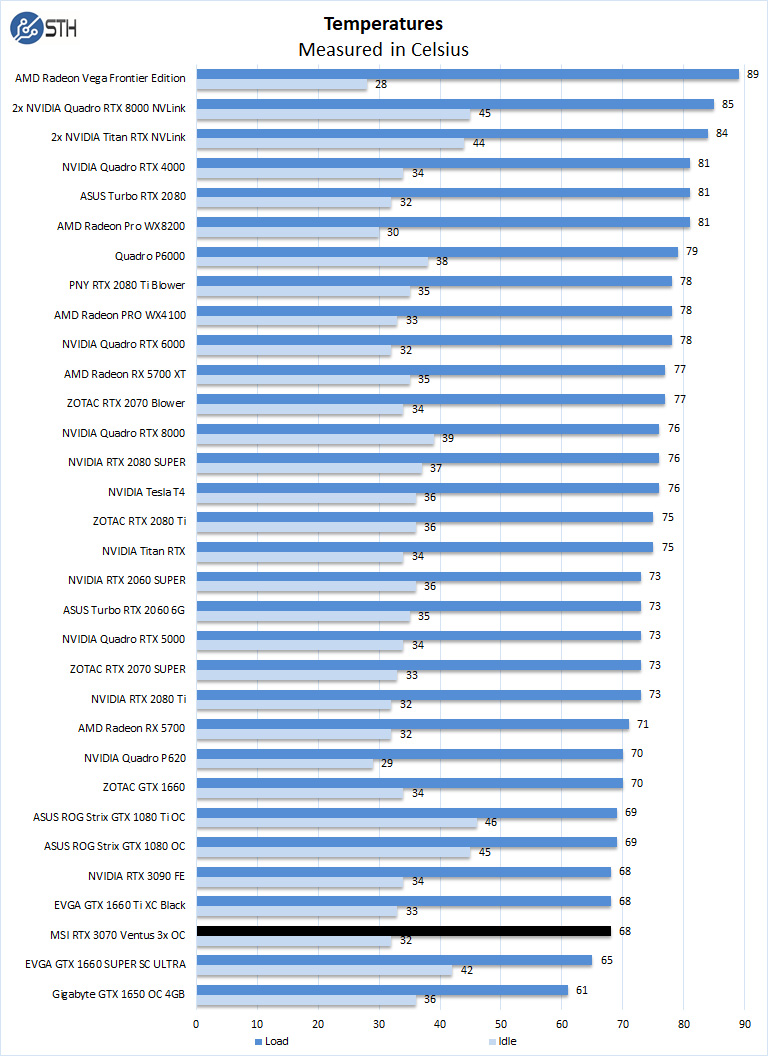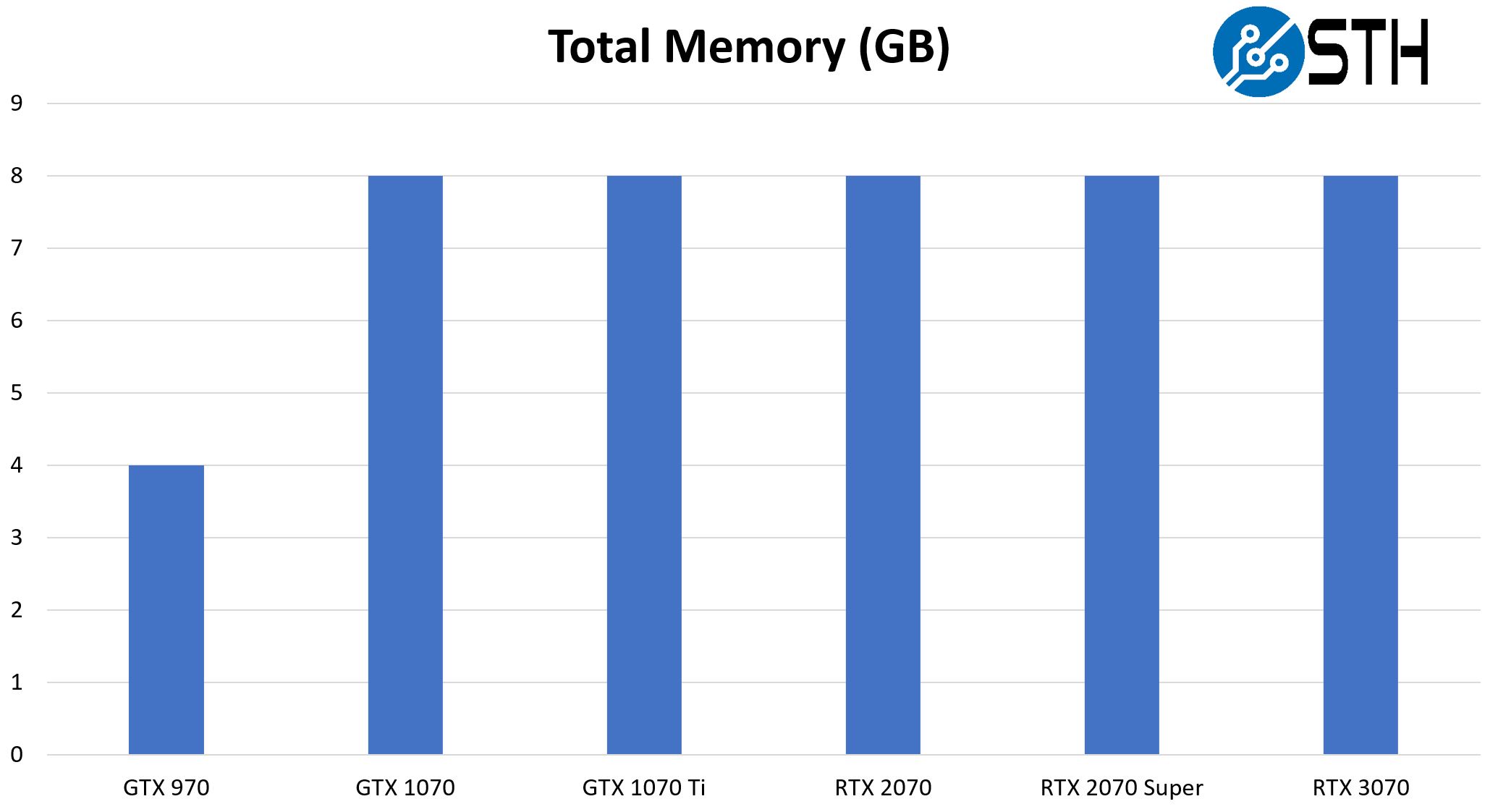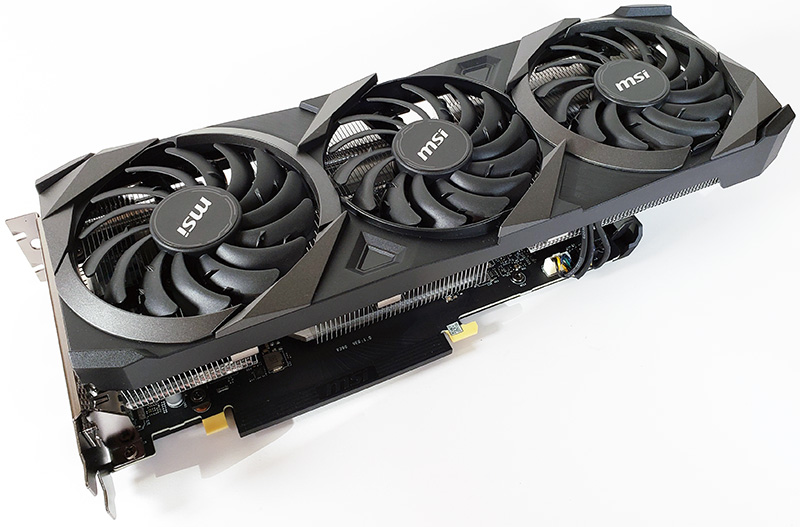Power Tests
For our power testing, we used AIDA64 to stress the MSI RTX 3070 Ventus 3x OC, then HWiNFO to monitor power use and temperatures.

After the stress test has ramped up the MSI RTX 3070 Ventus 3x OC, we see it tops out at 220 Watts under full load and 15 Watts at idle. These are very reasonable figures.
Cooling Performance
A key reason that we started this series was to answer the cooling question. Blower-style coolers have different capabilities than some of the large dual and triple fan gaming cards.

This is one of those triple fan cards, not a blower card. Since we started the series, the TDP on the “70” level in the GeForce stack has gone from 150W to 220W. As the rest of the stack sees increased power consumption, blower-style coolers have largely fallen out of favor. Temperatures for the MSI GeForce RTX 3070 ran at 68C under full loads, which shows MSI’s cooling solution performs very well and makes very little noise. Idle temps we saw were 32C, which is also excellent for a GPU of this size.
Final Words
From a raw compute perspective, the NVIDIA GeForce RTX 3070 takes the newest Ampere architecture and easily out-performs previous generations by a wide margin. With that said, there is one area that NVIDIA has not done a great deal of innovation on, and that is memory. The jump from 4GB to 8GB in this segment happened in 2016. Since then, the 8GB card has seen massive performance increases while the memory capacity has stagnated. This helps NVIDIA keep segmentation between its gaming-focused GeForce line and higher-end cards previously known as Tesla and Quadro. It is also starting to limit the usefulness of cards.

As for the MSI GeForce RTX 3070 Ventus 3x OC Edition, we get a much larger card than the NVIDIA Founders Edition. The company has a giant cooling solution, but that also comes at the expense of fitting into many chassis. For our readers thinking about 1-2 cards in a desktop/ workstation chassis, this is not a major concern. For our readers thinking about denser GPU configurations, this card simply is too big.

Still, the performance of this MSI card was good which is one of the biggest factors. The other and non-trivial factor is that we were able to buy the card. For $589, versus the Founders Edition at $499, we would probably pick the Founders Edition over this card. With that said, we could not buy the Founders Edition, but we could buy this card which is a first-order decision factor for many.




Hey that’s the card the card I was able to find and got it for $525 at microcenter. Last one in stock woot! It completed the missing piece to my build. Wish the card had light though, don’t care for rgb but a nice lit up RTX would be cool.
Thanks William, an excellent comparison that we’ve been waiting for.
Shouldn’t the article have a Tag for “compute”, and it would be helpful (for search) to have “compute” in the article’s title.
Also, the “Arion v2.5” benchmark would benefit from adding a few CPUs; for comparison.
We really appreciate seeing how much to decide to spend, and which card we should consider for compute applications.
I have this card and though a good card MSI really locked down the power consumption. There’s a interesting read on reddit about flashing this exact card and performance gain on reddit. I personally flashed this card with a bios from the MSI 3070 SUPRIM X which raises the TDP to 300 watts. Ive been running it for a few months with no issues and even mine with it when not playing games.
Google: reddit Flashing BIOS to RTX 3070 Ventus 3x OC